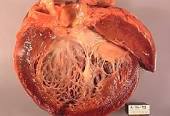Leave a Comment:
1 comment
[…] Adding to my increasing risk of chemotherapy-induced cardiomyopathy, my oncologist prescribed two rounds of high-dose cytoxan aka cyclophosphomide. […]
Reply
Learn about conventional, complementary, and integrative therapies.
Dealing with treatment side effects? Learn about evidence-based therapies to alleviate your symptoms.
Click the orange button to the right to learn more.

Will I die of cyclophosphamide (cytoxan) induced cardiomyopathy someday? Or maybe die of hemohorragic cystitis that leads to bladder cancer? Impossible to predict. I can say, however, that the chemotherapy regimens prescribed to me by my oncologist Dr. Berger, were incredibly toxic and did cause nasty late stage side effects called
If you have been diagnosed with cancer, how would you feel about being given a toxic therapy? Yes, it may kill lots of your cancer but it will also cause lots of short and long-term damage.
If you have to undergo toxic chemotherapy, how would you feel about undergoing evidence-based but non-conventional therapies shown to reduce and possibly prevent the nasty long-term side effects that I developed?
High-dose cytoxan, also known as high-dose cyclophosphamide, is a chemotherapy drug that is used in the treatment of various types of cancer and autoimmune disorders. Like any medical treatment, it has both potential benefits (pros) and risks (cons). Here are some of the pros and cons of high-dose cytoxan:
Pros:
Cons:
I’m curious. Am I being a wimp when I complain about all of the toxicity of conventional oncology? Or do you think conventional oncology should learn more about evidence-based but non-conventional therapies?
David.PeopleBeatingCancer@gmail.com
David Emerson
“Fatal cardiomyopathy developed in two patients receiving cyclophosphamide in preparation for bone marrow transplantation. Both patients had normal EKGs prior to receiving cyclophosphamide in total doses of 168 mg/kg (case 1) and 144 mg/kg (case 2) and subsequently developed loss of voltage and ST-T wave changes. One patient (case 1) died of CHF and hypotension while the other patient (case 2) developed tamponade.
Prior to this report, the lowest total dose of cyclophosphamide reported to cause fatal cardiomyopathy was 180 mg/kg. In contrast to anthracycline congestive cardiomyopathy, the effects of cyclophosphamide appear to have an acute onset and do not appear to be the cumulative result of drug dosing. Postmortem examination in both patients revealed thickened left ventricles with intramyocardial hemorrhage.”
“Acute haemorrhagic cystitis is a troublesome complication of high dose cyclophosphamide administration. Bladder toxicity has been reported in 4-36 per cent of patients receiving this drug [1]. Acute cystitis – the commonest form of bladder toxicity, is characterized by dysuria, frequency and haematuria, in absence of bacteriuria. Cystitis usually develops within 24 to 48 hours after drug exposure and lasts for 5-7 days [2]. Severe cases manifest with frank haematuria, passage of clots which can lead to obstructive uropathy [2, 3]..”
[…] Adding to my increasing risk of chemotherapy-induced cardiomyopathy, my oncologist prescribed two rounds of high-dose cytoxan aka cyclophosphomide. […]
Reply